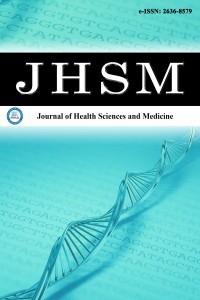
Journal of Health Sciences and Medicine
Yazarlar: Derya HOŞGÜN, Semih AYDEMİR, Can ATEŞ
Konular:Sağlık Bilimleri ve Hizmetleri
DOI:10.32322/jhsm.925332
Anahtar Kelimeler:Pulmonary embolism,Mortality,İnflammatory
Özet: Background: Pulmonary thromboembolism (PTE) is a leading cause of death from vascular events. In the pathophysiology of PTE, inflammatory mediators have been shown to be upregulated and to interact with coagulation factors.In this study, we aimed to investigate the role of symptoms, clinical and radiological findings, and the blood parameters measured at presentation within the first 24 h after the onset of the symptoms in predicting 90-day mortality and intensive care unit (ICU) requirement in patients with PTE. Methods: The retrospective study included 264 PTE patients that were followed up at our Chest Diseases clinic and ICU between 2014 and 2019. Results: The 264 patients comprised 55.3% women and 44.7% men with a mean age of 62.80±15.95 years. Of these, 189 of them were hospitalized in the Chest Diseases clinic and the remaining 75 patients were followed up at ICU. Total mortality occurred in 8 (3%) out of 264 patients. Risk factors for 90-mortality included white blood cell count (WBC), red blood cell distribution width (RDW), mean platelet volume (MPV)/RDW ratio, right ventricular dilatation (RVD), recombinant tissue plasminogen activator (rtPA) therapy, ICU hospitalization, and increased APACHE II (Acute Physiology and Chronic Health Evaluation II) scores (p<0.05). Conclusion: The results indicated that TTE findings, baseline hemodynamic parameters and symptoms, rtPA therapy, and CBC parameters including WBC, NE, and RDW are significant risk factors for predicting both mortality and ICU requirement.